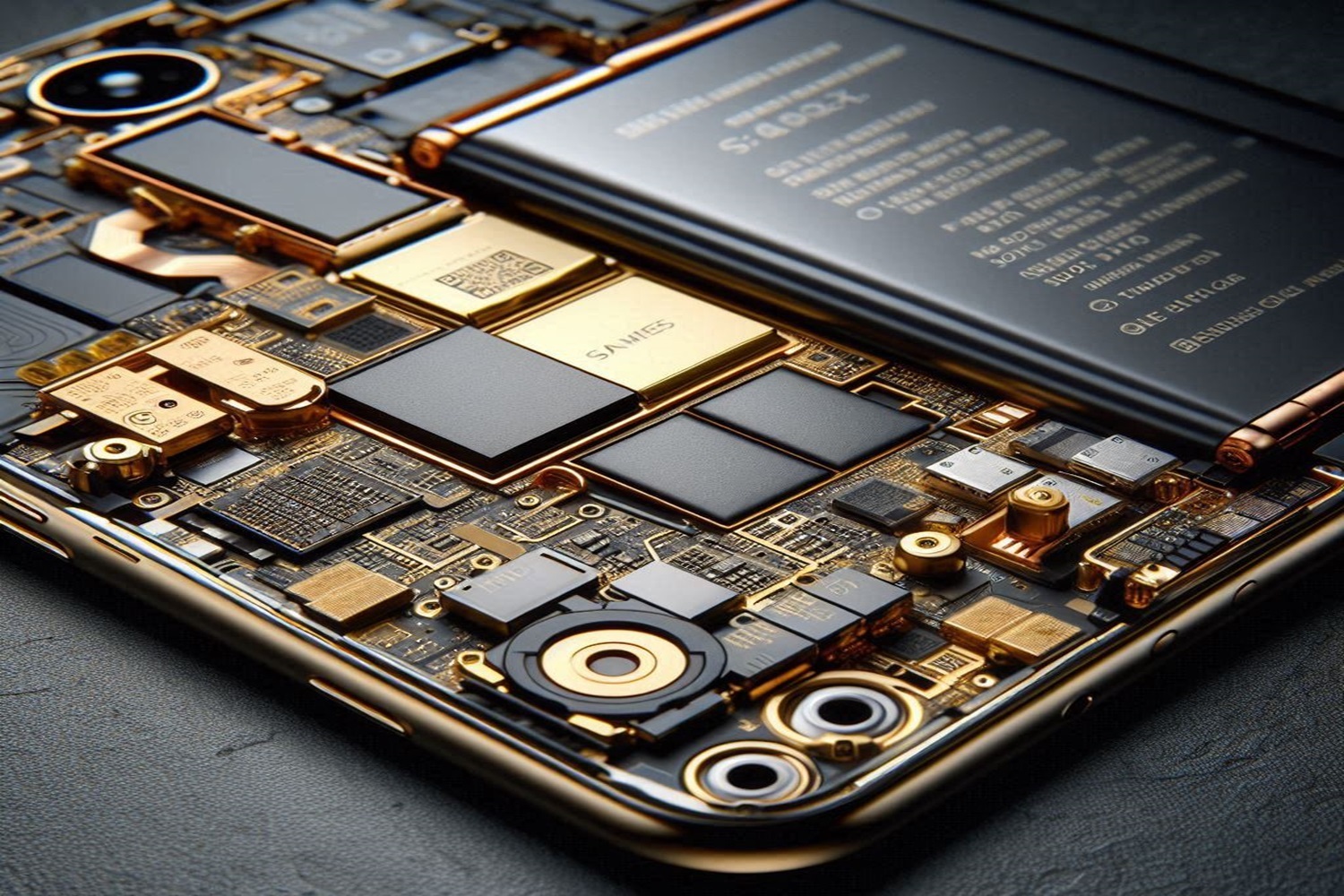These days, smartphones are everywhere and act as our personal assistants, entertainment venues, and hubs for communication. Many of the complex components in these wonders of contemporary technology are very vital for their functionality and performance. Gold is one component whose surprisingly important influence helps to assemble these devices.
This precious metal is not only for luxury goods or jewellery; it is also essential to guarantee flawless and consistent operation of our smartphones. But which particular components of a smartphone call for gold, and why is gold so vital?
The Part Gold Plays in Smartphones
The special qualities of gold make it a popular material in many different kinds of technology. It is perfect for use in electronic components requiring consistent over-time performance since it is highly conductive, corrosion-resistant, and flexible. Here’s a closer view of the main gold-dependent smartphone components:
1. contacts and connectors:
o Internal Connectors: Gold is frequently found in contacts and internal connectors of a smartphone. Between several parts of the gadget, these connectors help to transport electrical impulses. Reliable connections and low resistance guaranteed by gold’s great conductivity are essential for the device’s flawless operation.
o SIM Card Contacts: Gold is used also in the SIM card slot, which links your smartphone to the cellular network. SIM card slot gold-plated contacts guarantee a stable connection and improve signal quality.
2. Chipsets and Integrated Circuits:
o Processors: The core of any smartphone is its CPU, or central processing unit. The high conductivity of gold makes it used in the internal circuitry of the CPU. This use of gold facilitates reliable and effective data processing for the CPU.
o Memory Chips: Gold is also absolutely vital for RAM (Random Access Memory). These chips save data momentarily for rapid access by the CPU. Gold’s job here is to guarantee flawless, uninterrupted data flow throughout the semiconductor.
3. Printed Circuit Boards (PCBs):
o Gold Plating: The PCB provides a framework for attaching several parts and forms the backbone of an internal electronics of a smartphone. Plating the PCB’s connectors and pads is done with gold. Ensuring long-term durability and dependability, this gold plating helps guard these areas from oxidation and corrosion.
4. Touchscreen Panels:
o Conductive Layers: Modern touchscreens—including those used in smartphones—often feature gold in their conductive layers. Accurate detection of touch inputs and consistent performance of the touch interface depend on gold’s conductivity.
5. Battery Contacts:
o Connections: Another essential part of a smartphone is its battery, which makes gold utilized in the contacts and connectors. This guarantees dependability of electrical connections between the battery and the electronics of the gadget and effective power transfer.
Why GOLD?
The decision on gold for these parts comes down to a few main considerations:
• Conductivity: Gold conducts electricity really brilliantly. Components requiring minimum resistance and loss of performance to broadcast electrical signals depend on this quality.
• Corrosion Resistance: Gold does not tarnish or corrode over time unlike other metals. This resistance to oxidation guarantees dependability and functionality of connections and components over the lifetime of the equipment.
• Malleability: Gold is quite malleable, which means it may be readily formed into thin layers or complex patterns. Creating fine, detailed electronic components makes this quality helpful.
The Monetary and Environmental Effects
Although gold is absolutely essential in smartphones, its use raises questions about economic and environmental effects. Significant environmental effects of gold mining and extraction include pollution and damage of habitat. Furthermore, the price of gold may cause technological products to be more costly.
More sustainable methods like recycling help to solve these problems. Many smartphone companies are looking at ways to collect and recycle gold from outdated smartphones, therefore lowering the demand for fresh mining and the environmental impact.
Final Thought
Although gold is a rare and valuable metal, its importance in smartphones is both pragmatic and indispensable. From guaranteeing the dependability of internal contacts to improving the performance of important parts, gold’s special qualities make it a preferred material in contemporary electronics.
The value of gold in smartphones stays a monument to the careful balance between invention and resource management as technology develops and the desire for high-performance gadgets increases. Thus, bear in mind that a little gold is keeping your smartphone working smoothly, so adding some elegance to your regular digital experience.
Also read,



